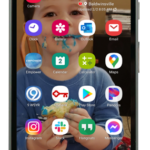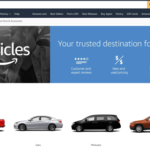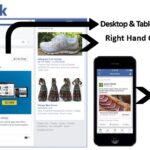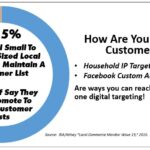What is a Lookalike Audience?
Have you ever been out with friends or met someone new, and right off the bat they tell you that you look like someone or have a doppelgänger? It’s always interesting to hear what they say next because it can completely change the mood of the night. Maybe it is someone that you will take as a compliment, or maybe they mention someone’s name that you are NOT happy to look like. I have been told that I look like Emily Blunt (compliment), and Kimmy Gibbler from Full House (not a compliment).
It is no secret that the digital world has several ways to target consumers, customers, and potential customers, but people don’t realize that there are also various ways to target what we call a “Lookalike Audience”. We can create a Lookalike Audience with Mobile Conquesting™, Facebook, and Native Display Ads.
Typically, business owners have a general idea of who their target customer is by categorizing their demographics, their behaviors, where they live and work, and what they enjoy, and with a Lookalike Audience, we are able to open up the pool of people that we are targeting to find more people like that.
Mobile Conquesting™ is a complex product that many business owners love because they can use it as a two-pronged approach and come at consumers from various angles. The first prong with Mobile Conquesting™ is targeting people by their geographic location, and then adding in online behaviors (targeting people who have shown specific behaviors online, or are in a certain demographic) and offline behaviors (targeting people by where they have been tracked with their phone recently such as a location, business, or specific brand name store). For example, if I own a furniture store, I can target people within a 15 mile radius of Lebanon, Kansas (fun fact: Lebanon, KS is the middle of the United States) that have recently moved, are new homeowners, are newly engaged, and are recently married. Those are going to the online behaviors to target. The offline behaviors we can target are people that have recently been to an Ashley Furniture Store, an IKEA, or a Pottery Barn. Sounds really targeted, right? We are just getting started.
Now we can add in additional ways to target with various geo-fencing strategies. Geo-fencing is where we can target people in real-time while at a competitor’s location or event. We do this by drawing a virtual fence around a location using your device’s global positioning system (GPS) or Internet Protocol (IP) address, which is just like your virtual address. Anyone within that geo-fence has the potential to see my ad. When those people then leave that geo-fenced location and they head over to a local restaurant, they can continue to see my ad by doing geo-retargeting. We are continuing to target people after they leave the locations that we are geo-fencing. Here is where we get into the doppelgängers. With geo-retargeting lookalike, we continue to target people after they leave the locations that we are geo-fencing, and now we can target those people’s neighborhoods.
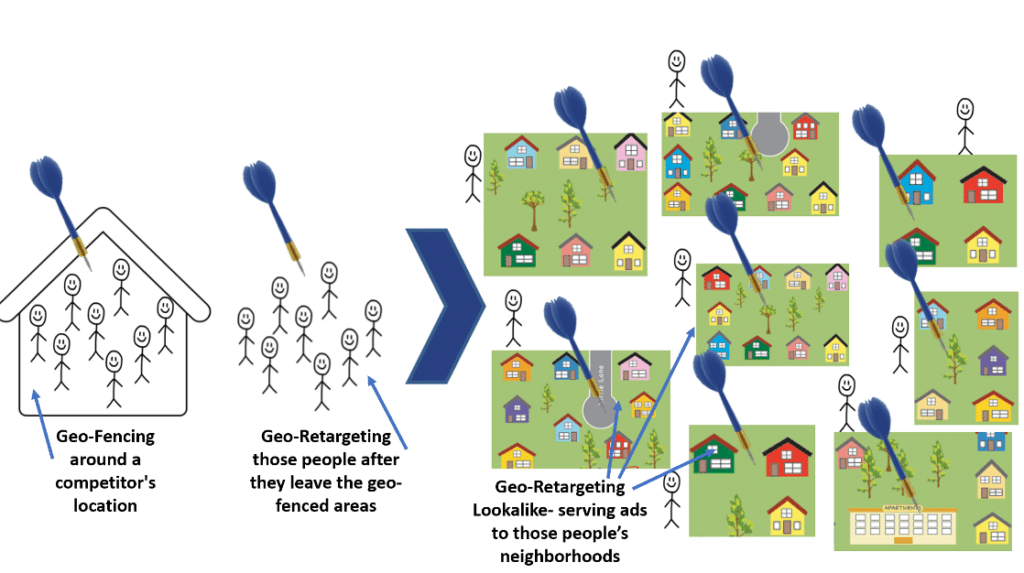
So why would a business want to pay to show ads and target people that they can already reach by emailing them for free? For business owners that are doing email blasts as a means of advertising, some things to consider are what the open rate is. Customers can delete the email that is coming through without even opening it, so how do you reach those people? Maybe you have a really high open rate – 20% – that’s great! But how are you reaching the other 80% of people who don’t open your email? People also don’t have to “opt in” with native emails ads; they are simply seeing the ad on websites that they would normally be going to. There is also the spam filter. A lot of mass emails that go out get caught in the spam filter, which leaves the customer never seeing your ad. Also, if you are sending your email blast as a picture or embedded graphic, many email servers block images and your potential customer has to unblock the images to see the information you want to show.
Who knew that we gave so much information away about ourselves with just an email address? Think of all the places you enter in an email address, online. Each time you do that, you are leaving a little breadcrumb about who you are and what you are interested in that marketers can then use to target ads to you. We give up A LOT of information about ourselves online, but we are also open books when it comes to what information we provide. How many times have you ever read the fine print on an app that you downloaded, or how many times have you entered your email address when you get to a website because they are offering a discount code? Email addresses online are like digital social security codes. Just the other day I was looking for one of those date night in a box things, and I had the opportunity to get a discount, IF I entered my email address. Save 10% and sell my digital soul? Let’s spin away!
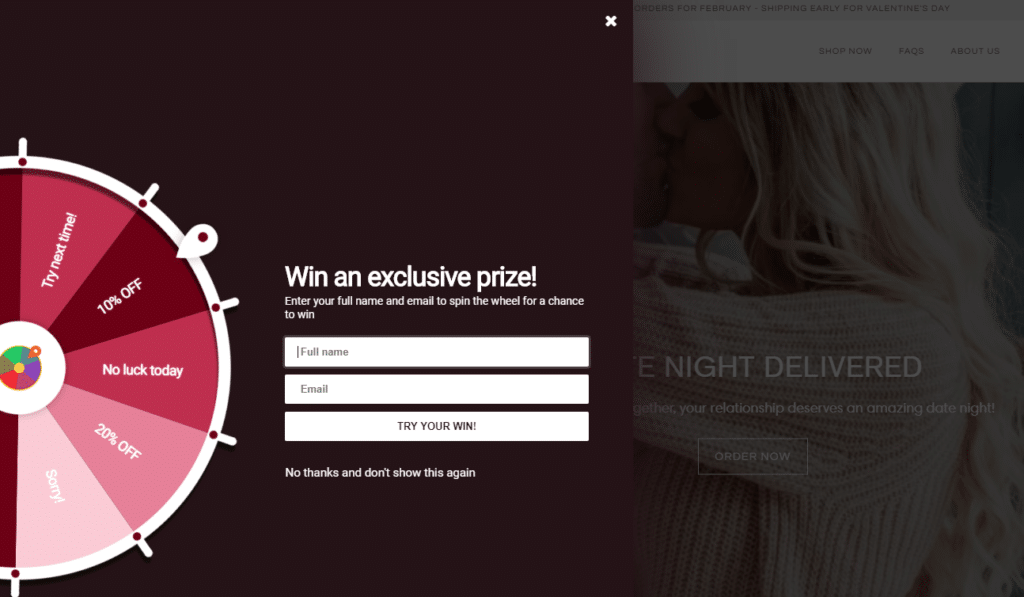
Just by entering my email address, that website now has more information about me than I thought I gave up. They let me know that they use cookies, but as consumers, do we ever read the policy?

That is the first way we can create a lookalike audience with a digital strategy. Another way to create a lookalike audience is with Facebook. The first thing that we will do is upload to Facebook a list of people that a business wants to reach, to find those people while they are on Facebook and serve them ads within their feed. The list can be a combination of first name/last name/zip code, phone numbers, and/or email addresses.

By using that initial list to find people, Facebook can gather characteristics of these people and determine their online behaviors. With a Facebook Lookalike Audience, Facebook takes the top 1% of users whose characteristics match the people on the business’ email list and then targets them on their Facebook feed. So, in other words, the Facebook algorithm is looking at all the profile information and behavioral information it has for the people on the list and finding other people (not on the list) who are similar, and showing them the ad too.
The final way that we can target with a lookalike audience in the digital world, is with Native Email Matching. Native ads are ads that match the look, feel, and visual context of whatever website or app they are appearing on. These ads are considered native because the color of the text and background might change, the font might change, and the format of the ad itself might change, all depending on the format of where that ad is appearing. With various strategies to use native ads, native email matching and creating a lookalike audience is one of them.
The first step to creating a lookalike audience is to utilize a current email list that you have as a business owner. We would take that list and upload to the ad exchange, and the ad exchange will then find those people while they are online and serve them your ads. Typically, about 50% of those email address can be found, and then once these emails are found online, we can serve your message as a digital ad on websites and apps those people are visiting. The second step would be for the ad exchange to find other users that match the same demographics as those that are on the original list. By using a lookalike audience with native, it not only gives you an opportunity to communicate to your current customers in an additional way besides just email, but it also opens up the opportunity for you to interact with people that aren’t current customers, but have the same behaviors and characteristics as your current customer. Something to remember with this strategy is that we are NOT sending emails to the people on the list that is provided, we are simply using those email address to find people while they are browsing online on apps and website and showing them a native ad, and using that list to find other people with similar demographics.
Most people don’t, but today we are going to look at just a portion. I clicked on the cookie policy for this website, and after scrolling 5 times, I see this:
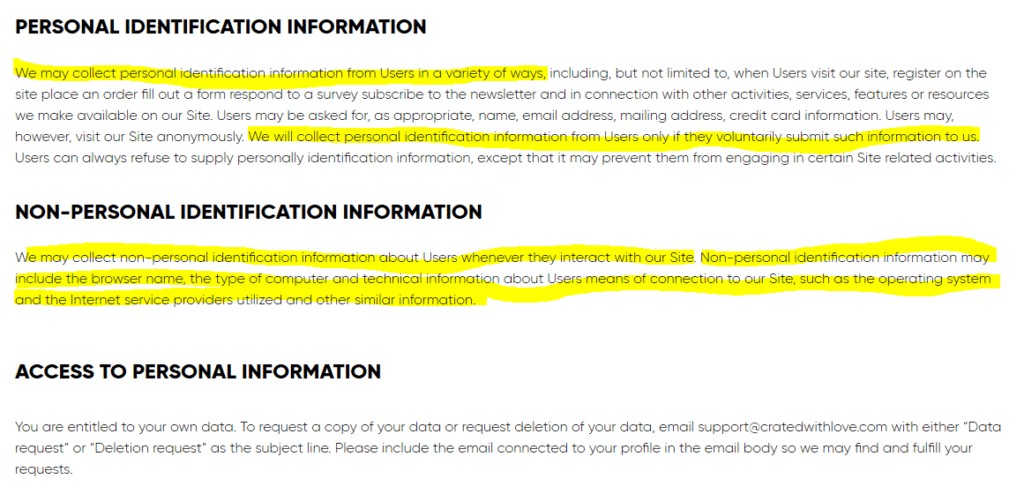
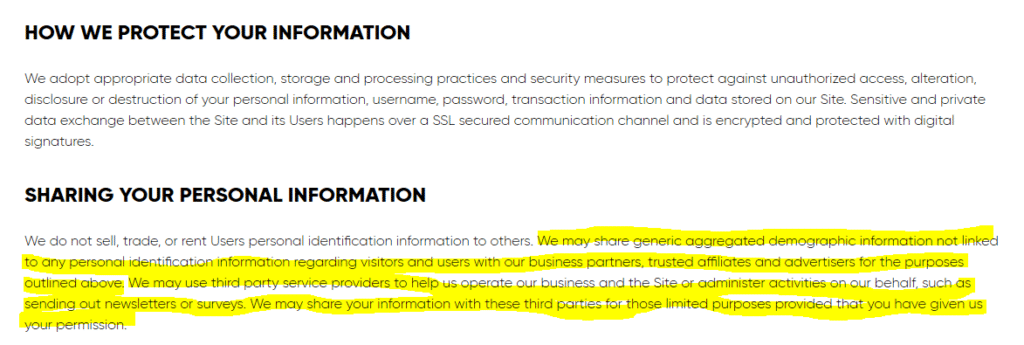
So right here, just by visiting the website, they are collecting what type of browser I’m using, what internet provider I’m using, my demographics, etc. So now when I enter my email address to get that 10% off code, I am entering the realm of opportunity for being part of a lookalike audience.

